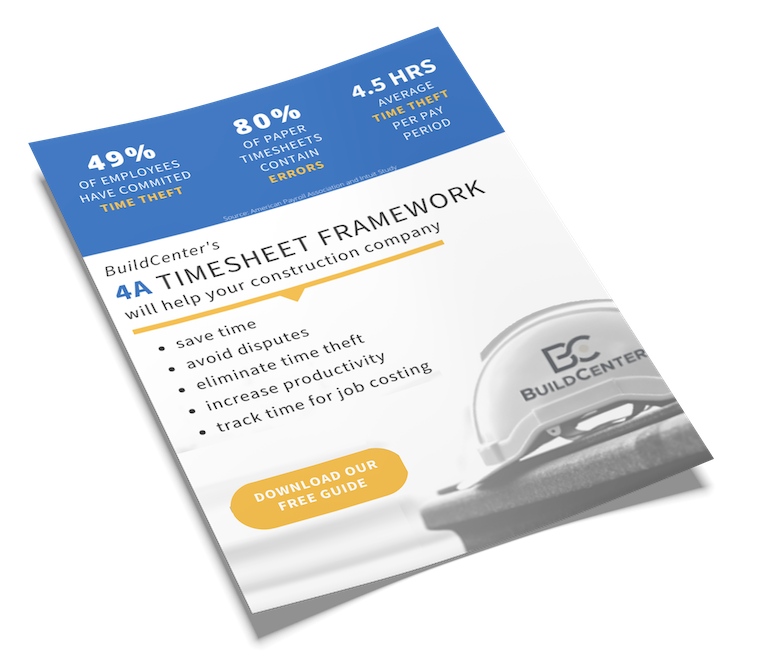The importance of accurate job costing can be summed up in this famous quote from Peter Drucker “If you can’t measure it, you can’t improve it.”
In construction, job costing is a common practice for most companies regardless of size. The smaller the company, the more likely it is that job costing is not being used, however more and more small trade contractors and GC’s are realizing the importance of knowing how much money is being made (or lost) on each project.
If you are new to the concept of job costing, check out our blog on the basics to get up to speed.
Once you add up the materials and labor used on the project, you may not have the full picture. What about project management time for the job? What about other time spent sourcing materials or delivery time? These costs can easily get overlooked and fall under “company overhead”. This can give you a false sense of profit if it is not accounted for.
As a construction business owner myself with over 30 years of job costing experience, I know how important it is to have accurate data and the risks of not knowing how your staff is spending their time.
In this blog, we discuss an easy way to track management hours and why you should consider factoring this into your job costing report.
How to structure your job costing
When estimating a project, most construction professionals use various cost codes (CSI codes) to break down the estimate into phases or small units. This is important because it allows you to focus on each task and allocate the hours and materials needed to complete them.
Here is an example of an estimate:
Flooring Contractor Example:
| Demo of existing flooring | 8 hrs x 2 workers = 16 hrs + $200 dump fee |
| Test floor for mouisture | $300 for labor and materials to test |
| Floor Preparation | 16 hrs x 2 workers = 32 hrs + $600 in materials |
| Flooring installation | 16 hrs x 3 workers = 48 hrs + $3250 in materials |
| Project Management | 5 hrs |
| Overhead/Insurance | 10% |
| Profit | 10% |
This estimate above is for a small flooring installation. The project management line item is part of the estimate and should be tracked accurately and job costed accordingly. If you don’t include any PM or other management line items then you would be expected to pay for that time in the overhead line item.
I’ve heard the argument before…..these are salaried employees and if I have a project or not, I still have to pay them so therefore they are overhead. I understand that argument but it misses the point of job costing.
Wouldn’t you want to know if your PM time allocated to jobs is consistently low? Don’t you want to know if one project goes way over on hours and another one doesn’t? What if certain customers demand a lot more PM time than others…..don’t you want be able to charge them in the future more hours to cover it?
It goes back to the old saying “Garbage in, garbage out”. If you don’t have the information to make those decisions, then you are as they say “flying blind”.
If you track it, you will know.
But how can it be done easily? Construction apps like BuildCenter allow your crew and your managers to track their time easily. The hours are applied to jobs and can even be applied to your cost codes. During demo, the hours are applied to demo and during installation, they get applied to that cost code. Even salaried employees can track their time using the app so you get accurate job costing data at your fingertips.
If your construction business spends little time managing the crews and you don’t include time for management in your estimates, it may make more sense to use the overhead line item to capture that time. As your business grows, however, more time will be spent on management and non production work. This is when you should consider switching to include that time and start tracking.
In our company, we even have our office admins apply their time to jobs because it allows for a much more accurate job cost report.
Summary
In construction, it’s critical to know which jobs are profitable and which ones are not. If you start tracking all the time spent including management and other non production hours, you will have a much more accurate job cost report. Don’t get fooled into thinking that you made a lot of money on a job when you really broke even due to these extra hours spent. Using a tool like BuildCenter allows you to easily capture all the hours from everyone so that you have the information you need.
Resources
- Download the “Perfect Construction Timecard Template” to get your workers tracking time so you can start job costing
- Try BuildCenter for free to see how you can track workers time and automatically apply to jobs




